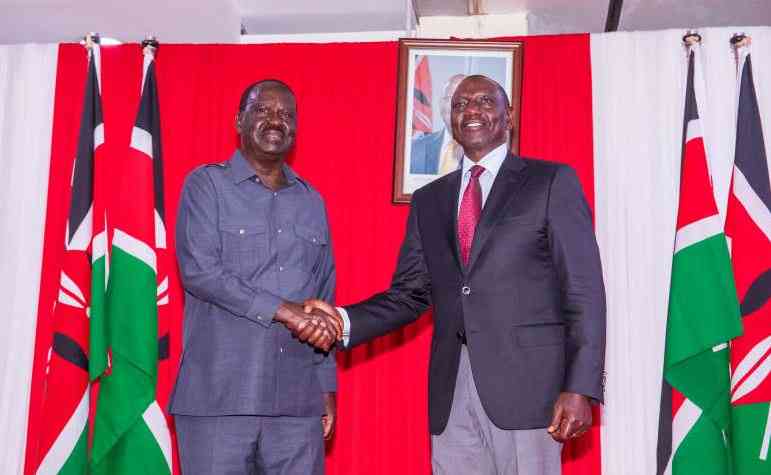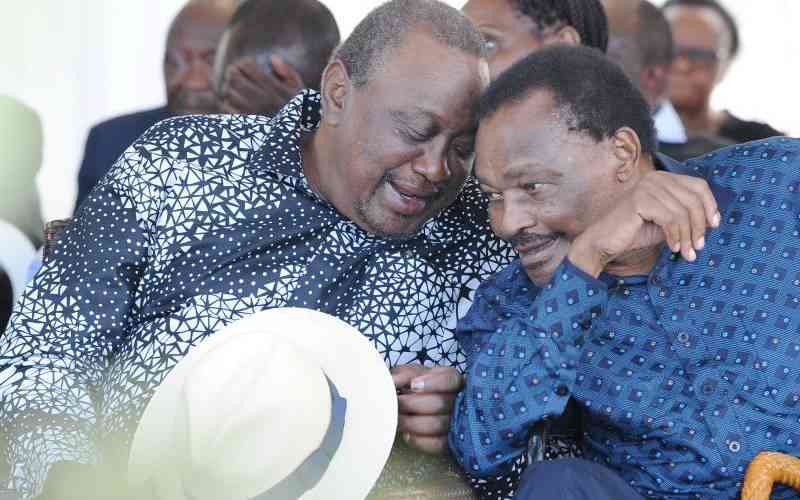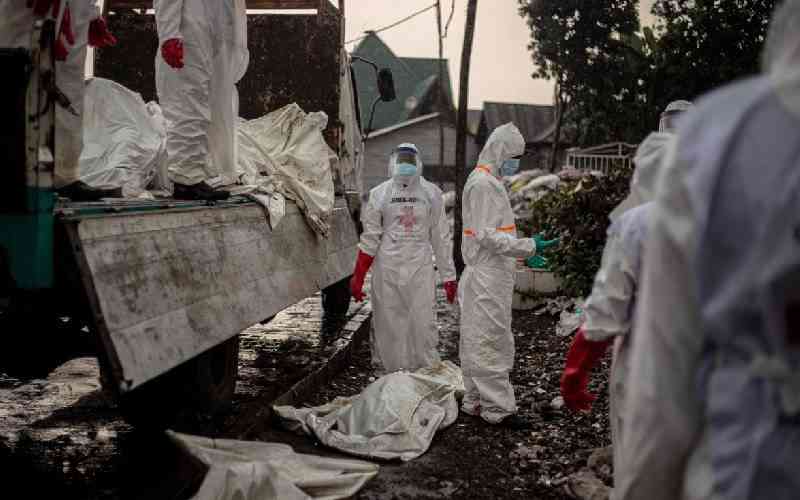Projects worth Sh410 billion have been put on hold following President Uhuru Kenyatta’s freeze orders last week.
The President froze all new government projects until the ongoing ones are completed.
Projects directly aligned the President’s Big Four Agenda- universal healthcare, manufacturing, affordable housing and food security, would only be exempted with written authorisation.
Following the directive, Ministries, Departments and Agencies (MDAs) can only access money to pay salaries and administrative costs as they await Treasury’s approval for various projects. “We’ve uploaded on the Integrated Financial Management Information System (IFMIS) only the recurrent budget and that of donor-funded projects, and corresponding local counterpart” said National Treasury Principal Secretary Kamau Thugge.
The PS said projects fully financed by the exchequer will be uploaded on IFMIS for tendering only after an agreement between Treasury and line ministries.
Following Uhuru’s order, procurement for a number of projects ranging from construction of airstrips, new police stations, new geothermal plants, schools and dozens of roads has been put on hold.
The government was expected to spend about on Sh677.2 billion on various development projects with donors directly financing some of these to a tune of Sh218.5 billion, Sh27 billion in grants and Sh191.5 billion in loans.
Direct funds from donors in terms of loans and grants as well as fees and charges by MDAs are collectively captured under the Appropriation-in-Aid (A-I-A) and amounted to Sh266.3 billion, leaving a deficit of Sh410.9 that the government is expected to raise through borrowing locally and externally.
Ministries, departments and agencies are allowed to retain monies collected through various charges and given directly by donors.
Although the Ministry of Water and Sanitation has the most new projects valued at Sh48.7 billion, it will retain the most funds. A-I-A for the water ministry is valued at Sh25.2 billion.
State Department for Information Communications and Technology and Innovation will retain about Sh10.2 billion.
The department had a budget of Sh26.2 billion for various development projects. Out of this, projects worth Sh16 billion will have to wait clearance from Treasury.
The laptop programme is the single most largest programme that has been put on hold as line ministries wait for Treasury to cross-check all new projects are aligned to Big Four or not. The Digital Literacy Programme has been allocated Sh11.9 billion.
Also pending is a Sh9.4 billion medical equipment leasing project for 98 hospitals. Others are Lamu Port-South Sudan-Ethiopia-Transport (LAPSSET) corridor project valued at Sh8.8 billion.
Although Treasury never shared with Sunday Standard on what the vetting of these projects by Treasury would involve, it is clear that Rotich and his team will be determining whether or not the they are aligned to Uhuru’s Big Four Agenda.
Stay informed. Subscribe to our newsletter
Debt situation
At least 300 projects might be affected by the President’s directive.
Economists say that the government wants to free up as many resources as possible as it strives to remain in International Monetary Fund’s (IMF) good books. The Fund, which offers Kenya a loan to cover for unforeseen economic risks, has recently come hard on the government to cut the gap between revenue and spending.
This gap has been growing, forcing the government to borrow heavily.
Experts from the IMF were in the country this week for discussions on the country’s debt situation.
According to a global credit rating agency, Moodys, Kenya’s fiscal deficit is the largest in East Africa. The firm attributes this to the country’s heavy spending on infrastructure development, subdued revenue collection and a rising cost of debt.
“Kenya, which relies less on grant funding, has posted the widest fiscal deficits over the past five years, where they averaged close to 7 per cent of GDP,” noted Moody.
“Large fiscal deficits in Kenya also reflect a narrowing of domestic revenue base as government revenue net of grants have declined as a percentage of GDP. Kenya is the only country of the four that has failed to grow its revenue net of grants,” the firm said.
The firm said the erosion in fiscal metrics was the reason behind a decision to downgrade the sovereign rating to B2 in February. However, Kenya rarely spends all the money it sets out in its budgets, utilising only 70 to 80 per cent of it.
Experts point out that the country’s absorption of development funds is usually lower and that projects usually fall behind schedule, incurring extra costs in contract variations.
They also point out at a tendency by new office holders, both at national and county government levels, to abandon old projects for new ones.
“As a result, there have been so many white elephants left from one regime to another,” said Gerrishon Ikiara, an economics lecturer at the University of Nairobi. In the current financial year, Treasury will spend at least Sh100 billion on projects that have draining taxpayers money for the last five years.
This includes failed projects such as the Kenya Meat Commission (KMC) which has not taken off despite attracting heavy investments from successive governments.
“The positive thing I see about the President’s directive is that it will be linking new projects with old projects in that one can ask for approval to change funds from one project to another,” said Ikiara.
He, however, said the directive will constrain new heads of parastatals and government agencies who might want to be associated with new projects that they themselves launched
This habit, experts say, has led to duplicity and fueled procurement malpractices in all levels of government.
Treasury Cabinet Secretary Henry Rotich said Uhuru’s directive would inject prudence in the government’s procurement processes that had become a soft spot for theft and graft.
“The President wanted to make sure that there is no jumping into new projects before ascertaining that there are old projects that need to financing,” said the CS.
“We are going to be more prudent in terms of domestically financed projects. Let us focus on what we started last year and complete it before ministries and entities jump into procurement for new projects,” he said.
Uhuru’s directive is expected to reduce the budget deficit significantly and bring it closer to the targeted 5.7 per cent of the country’s gross domestic product for the current financial year.
However, it is expected to slow down economic growth because the government is one of the largest spenders.
Experts warn the government’s latest austerity measures might not be effective in the long term.
“The government should consider diversifying the types of financing, not just the amount. Spreading debt obligations through innovative risk-sharing and financing schemes like Public Private Partnerships (PPP) may be more effective than cutting spending,” said Deepak Dave of Riverside Capital.
Treasury says ministries that do not have any ongoing project but have some lined up under the President’s Big Four Agenda can proceed with procurement as long as it is budgeted for.
“Think of what you started last year and the resources allocated to you this year, prioritise it to cover ongoing projects,” said Rotich.
Talk of austerity measures had been on the books long before Uhuru’s directive.
First, the government froze employment of new staff, kept retiring employees on extended contracts and tried to clean up the workforce to rid the public service off ghost workers.
Treasury then resorted to cutting down on luxury items while restricting foreign and domestic travel.
In 2016, CS Rotich sent out circular No.13 of 2016 announcing a number of austerity measures “mainly on account of budget rationalization, savings from slow-moving capital projects and reduced disbursements from externally funded projects.”
Cropped up
Last year, budget cuts cropped up again when a second presidential election came up. “To finance some of those emerging priorities, we have to restructure some expenditure, we are targeting non-essential expenditure particularly travel, both domestic and foreign. Foreign travel is banned for now, so that we can allow resources available to be directed to conduct another election,” CS Rotich said.
“We are also reviewing hospitality training and non-priority development expenditure,” he added.
In the financial year that ended in June 30 this year, Treasury delayed the implementation of what it described as “lower-priority investment projects.”
However, these token cuts have not been effective in bringing in significant savings.
Treasury is now intent on knocking off the multi-billion shilling pension budget in a defined contribution scheme that will see civil servants contributing 7.5 per cent of their gross salaries.
This will leave the public service as the next target of budget cuts which may translate to job losses.
In a letter to IMF in March this year, requesting for an extension of a standby arrangement, Rotich and the Central Bank Governor Patrick Njoroge said they had undertaken a number of measures to bring down the fiscal deficit for 2017/18 financial year to 7.2 per cent from 8.8 per cent.
The two also promised that the deficit would narrow down further to 5.7 per cent in the current financial year.
“In light of the revenue shortfalls this year, to achieve the fiscal deficit target for 2017/18, we have introduced specific revenue administration measures that are under implementation, and identified specific spending cuts,” wrote the Treasury.
Mr Rotich said with a number of austerity measures undertaken so far, the country was still within the 7.2 per cent fiscal deficit target promised to IMF.
“We are on course on that. Already, the budget out-turn preliminary indication is that we are on target. This financial year, we are looking at 5.7 per cent,” he said.
Compared to April 2017 when development expenditure stood at Sh530.7 billion, the government spent Sh366 billion on development as at April this year, a decline of 31 per cent.
 The Standard Group Plc is a
multi-media organization with investments in media platforms spanning newspaper
print operations, television, radio broadcasting, digital and online services. The
Standard Group is recognized as a leading multi-media house in Kenya with a key
influence in matters of national and international interest.
The Standard Group Plc is a
multi-media organization with investments in media platforms spanning newspaper
print operations, television, radio broadcasting, digital and online services. The
Standard Group is recognized as a leading multi-media house in Kenya with a key
influence in matters of national and international interest.
 The Standard Group Plc is a
multi-media organization with investments in media platforms spanning newspaper
print operations, television, radio broadcasting, digital and online services. The
Standard Group is recognized as a leading multi-media house in Kenya with a key
influence in matters of national and international interest.
The Standard Group Plc is a
multi-media organization with investments in media platforms spanning newspaper
print operations, television, radio broadcasting, digital and online services. The
Standard Group is recognized as a leading multi-media house in Kenya with a key
influence in matters of national and international interest.





